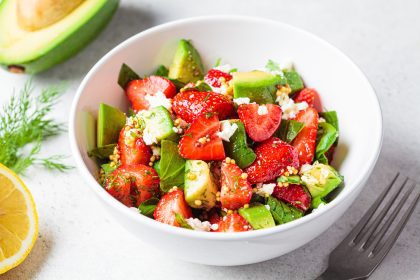For those looking to implement these dietary changes, experts recommend starting small rather than making dramatic shifts. Adding one anti-inflammatory food to each meal can make the transition more manageable. The key is consistency rather than perfection, as the study showed benefits accumulate over time with regular consumption of nutrient-dense foods.
Creating a pain-fighting meal plan
Nutritionists suggest structuring meals around anti-inflammatory ingredients. A typical day might include berries and whole grains for breakfast, a large salad with olive oil dressing for lunch, and fatty fish with dark leafy greens for dinner. Nuts and seeds make excellent snacks between meals, providing sustained energy while fighting inflammation.
The role of timing and portions
The research indicates that consistent exposure to anti-inflammatory nutrients throughout the day may be more beneficial than consuming them all at once. This finding supports the practice of eating smaller, more frequent meals rich in pain-fighting foods rather than larger, less frequent ones.
Hidden inflammation triggers to avoid
While adding beneficial foods is important, equally crucial is avoiding items that may trigger inflammation and worsen pain. Common culprits include:
- Processed snack foods high in refined carbohydrates
- Sugary beverages that can spike inflammation markers
- Excessive amounts of red meat
- Foods with artificial additives and preservatives
- Heavy consumption of alcohol
The sleep connection
The study also revealed an interesting connection between diet quality and sleep patterns among participants. Those following an anti-inflammatory diet reported better sleep quality, which in turn seemed to influence their pain levels. This suggests a complex relationship between diet, sleep, and pain management that warrants further investigation.
Exercise considerations
While the study focused primarily on diet, researchers noted that participants who combined their improved diet with gentle exercise showed even better results. However, the dietary benefits remained significant even for those with limited mobility, suggesting that food choices alone can make a meaningful difference.
The social aspect of dietary changes
Support from family and friends emerged as a crucial factor in successfully maintaining dietary changes. Participants who had support at home were more likely to stick with their new eating patterns and reported higher satisfaction with their pain management results.
Cost-effective alternatives
Understanding that some anti-inflammatory foods can be expensive, researchers identified cost-effective alternatives that provide similar benefits. Frozen berries, canned fatty fish, and seasonal greens can offer comparable nutritional value at a lower cost. This makes the diet more accessible to a broader range of people seeking natural pain relief.
Long-term sustainability
The study followed participants for twelve months, providing valuable insights into the long-term sustainability of dietary changes for pain management. Most participants who experienced pain relief reported that the benefits motivated them to maintain their new eating habits beyond the study period.
Future research directions
Scientists are now exploring several promising avenues for future research, including:
- The specific mechanisms behind gender differences in dietary pain response
- The potential role of gut bacteria in mediating diet-related pain relief
- The interaction between anti-inflammatory foods and common pain medications
- The impact of seasonal eating patterns on pain management
- The potential benefits for other chronic conditions
Expert recommendations
Healthcare providers suggest working with a registered dietitian to develop a personalized plan that takes into account individual food preferences, lifestyle factors, and specific pain conditions. This tailored approach may help ensure better adherence to dietary changes and optimize pain relief benefits.
The research continues to evolve, but the message remains clear: food choices can play a significant role in pain management, particularly for women. As our understanding of the diet-pain connection grows, it opens new possibilities for natural, sustainable approaches to chronic pain relief.
Remember that while dietary changes show promise, they should complement rather than replace existing medical treatments. Always consult with healthcare providers before making significant changes to pain management strategies.
This comprehensive approach to pain management through diet represents a significant shift in how we think about chronic pain treatment. By embracing these findings and making informed food choices, many people, especially women, may find a new path to better pain management and improved quality of life.

















